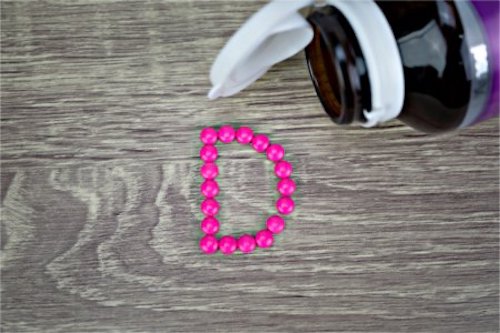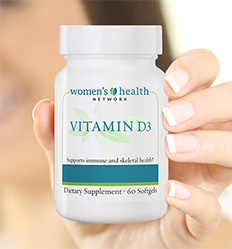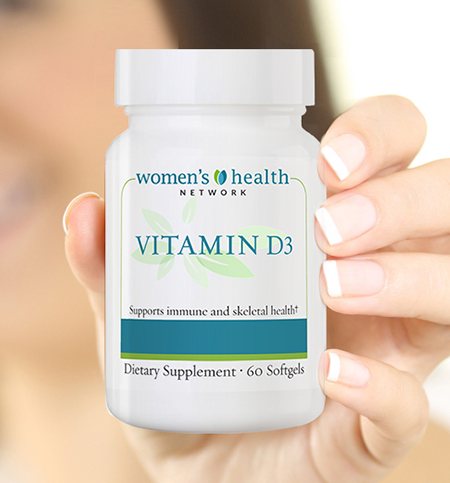You probably think following your doctor’s advice is the right thing to do. But when it comes to the importance of Vitamin D, I’m shocked at how wrong most doctors seem to be.

Time and time again I see patients whose conventional practitioner isn’t even aware of how much Vitamin D is needed to get optimal benefits. This leaves them exposed to serious risks associated with too little Vitamin D. In fact, it can be a critical factor in the condition that led them to me.
I find this lack of knowledge especially alarming when you look at the explosion of new research about the vital role of Vitamin D in our health. Much of it connects low levels of D to the development of extremely serious health problems — cancer, heart disease, diabetes, dementia and more.
What’s going on when your doctor is so wrong about something that’s absolutely crucial for your good health? Here’s what I tell my patients.
Two big problems with what your doctor may be telling you
I see two major problems when it comes to what the “right amount” of Vitamin D means for most doctors looking at things from the conventional medicine perspective.
1. Looking at the wrong Vitamin D blood level range. The measurement that conventional medicine practitioners use as the “normal” range for the results of a Vitamin D blood level test is too low. Way too low.
The latest scientific research shows the optimal range for health is 50-60 ng/mL blood level of Vitamin D. But compare that to the “normal” reference range — anywhere above 20-100 ng/mL — used by conventional medical practitioners. The truth is anything less than 32 ng/mL can seriously limit your ability to absorb calcium and lead to bone loss, among other dangers.
2. Recommending the wrong amount of Vitamin D needed daily. Vitamin D expert Dr. Robert Heaney reports that in order to reach a target 40-60 ng/ml Vitamin D blood level, the average person needs to supplement with 4,000-5,000 IU a day. And I completely agree!
However, many practitioners follow the Institute of Medicine’s recommendation of just 600 IU/day for people up to the age of 70, and only 800 IU/day for after that. According to researchers in the journal Nutrients, those skimpy recommendations can underestimate the actual need by an incredible factor of 10!
The sad truth is that most conventional medical practitioners don’t get nearly enough training about nutrition. Given all we know about the positive effects of supplements and what we eat, not thinking enough about nutrition is not only out of date, it is also harmful!
Are you at a higher risk of Vitamin D deficiency?
- You live above 35° latitude (north of Atlanta). You may only get enough UV radiation from the sun to produce Vitamin D in your skin between May and October in the Northern Hemisphere. To check if you’re able to produce Vitamin D from sunlight, look at your shadow. If your shadow is shorter than you are, then you can produce Vitamin D from this sunlight. If your shadow is longer than you are, you’re not being exposed to that small spectrum ultraviolet radiation that allows for Vitamin D production.
- You avoid the sun or use SPF 15 or higher sunblock
- You have dark skin
- You are elderly
- You are overweight/obese
- You are a teen who spends little time outdoors
Signs of Vitamin D deficiency
- Muscle pain
- Bone pain
- Low energy and fatigue
- Lowered immunity
- Depression and mood swings
- Irregular sleep
Benefits of Vitamin D
New research about the benefits of Vitamin D is extremely compelling. When you get the right amount of Vitamin D — remember that’s a blood level of 50-60 ng/mL — on a daily basis, it can lead to some astounding results, including:
- Less risk of hip fracture. Almost everyone who suffers from a low-trauma hip fracture has inadequate Vitamin D levels. In fact, one UK study found that 95% of those suffering hip fractures were deficient in Vitamin D. I believe that low Vitamin D is a major — and maybe even the most important — risk factor for hip fracture.
- Improved heart health. Vitamin D helps maintain healthy blood pressure, suppress artery-damaging inflammation and protect the vessels from calcification. As a result, Vitamin D deficiency is inversely associated with heart attacks, strokes, high blood pressure and heart disease deaths. Pretty impressive when you consider that heart disease is our #1 cause of death!
- Cancer protection. Vitamin D is an excellent modulator of immune function, helping to protect you from infection and at least 16 types of cancer.
- Diabetes prevention. Vitamin D helps prevent diabetes by enhancing insulin output and insulin sensitivity. People with low levels of Vitamin D have poorly functioning insulin-producing cells and an inadequate response to insulin, even when their blood sugar levels are normal.
Your next step
Congratulations! You may now know more about Vitamin D than many health professionals who just don’t get the training they need to about how supplements and nutrition can make a dramatic impact on your health.
Your next step is to make sure you’re getting enough Vitamin D by asking your doctor for the simple “25(OH)D” Vitamin D blood test. This inexpensive test determines your Vitamin D level and defines your need for supplemental Vitamin D.
Once you know your numbers, you can talk to your doctor about the appropriate level of Vitamin D supplementation in the form of D3.
And, you can stay up to date on the latest news in bone health with my weekly Better Bones Blog.
- Veugelers, P. and Ekwaru, J. A Statistical Error in the Estimation of the Recommended Dietary Allowance for Vitamin D. Nutrients, 2014; 6 (10): 4472 DOI: 10.3390/nu6104472
- Creighton University. (2015, March 17). Recommendation for Vitamin D intake was miscalculated, is far too low, experts say. ScienceDaily. Retrieved March 7, 2017 from www.sciencedaily.com/releases/2015/03/150317122458.htm











